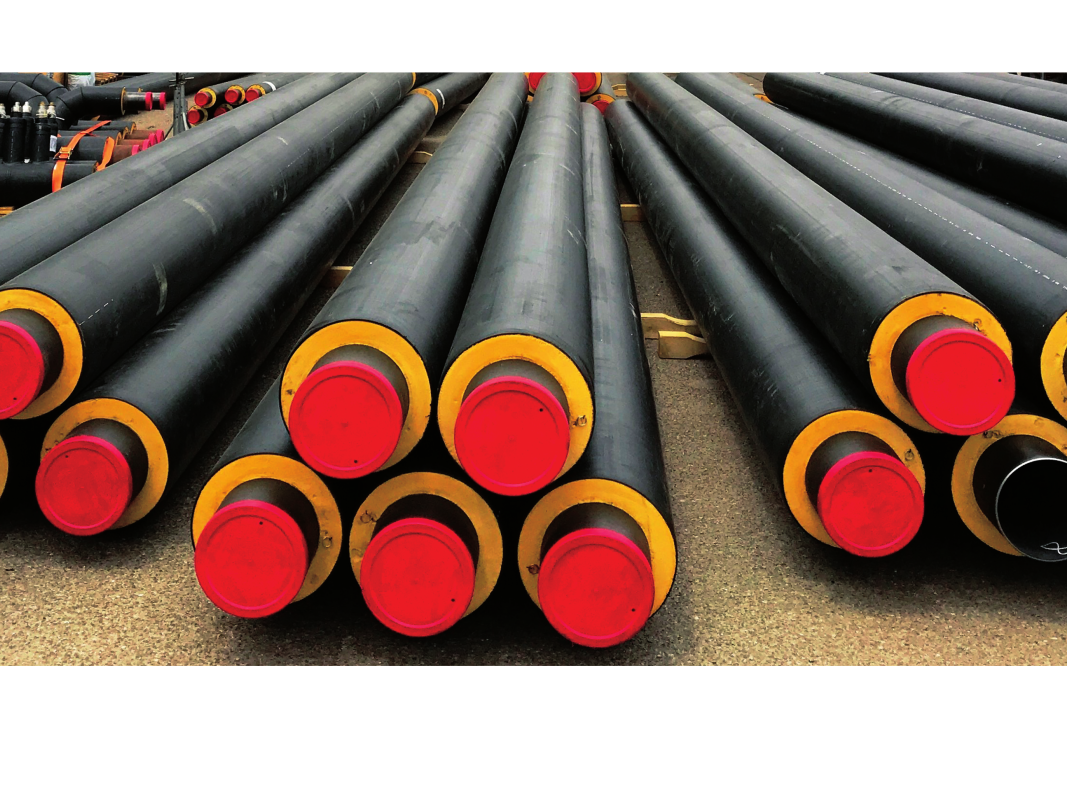The most efficient air conditioning systems are those based on distributed heating networks, district networks, heat networks or - as they are called in English - district heating.
These systems produce thermal energy in centralized facilities and distribute it to users through a set of 'pre-insulated' pipes, usually underground, through a fl uid that is usually hot water. This system guarantees better energy efficiency and quality of service than that offered by individual installations, in addition to allowing the efficient use of thermal energy and renewable sources, such as biomass, which is easy to integrate, fable and fl exible.
Regarding emissions, even using the same biofuel, a reduction is achieved compared to those that would emit the same number of individual facilities that would replace the system. In addition, the plant is equipped with highly effective elements - filter bags, for example -, which can control the possible contamination.
The main elements
Generation plant. The production of heat in these systems is done centrally for the different consumers in the generation plant. In this way, individual equipment can be eliminated at points of consumption and, on the other hand, it allows the incorporation of technologies with better energy efficiency, such as the use of waste heat or renewable energies (biomass, solar, geothermal energy). It is more efficient equipment by scale factor, which are also managed professionally.
Distribution pipe network. It is the one that allows the movement of fl uids. It consists mainly of 'pre-insulated' tubes to minimize thermal losses. By means of water - formerly also steam - the energy is transported to the users, where the heat is transferred to the consumption points. The network also has a return circuit to the central. Usually, the pipes are distributed through an underground pipeline that follows the layout of the streets in urban areas.
Substations. The thermal transfer between the distribution network and consumers (homes or other buildings) is carried out through a substation formed by an exchanger and the elements that regulate and control that the operation is correct, as well as the measuring elements for billing the energies. The exchanger of a house occupies little more than a shoe box compared to what a boiler occupies.
Everybody wins
Municipalities, responsible for urban planning and processing, are usually involved in the projects, as users of the network for their own buildings or as receivers, in any case, of the advantages offered by heat networks for cities. Among them, for example:
• Improve the urban landscape, increase urban sustainability, reduce the environmental impact and the consumption of the energy resource.
• They use renewable and local energy, which generates wealth and employment in the environment, while reducing their energy dependence.
• Reduce expenses (energy, maintenance and investment).
The energy services companies (ESE) are involved in the design, investment and management of the system. Their business is that they provide sustainable heating, cheaper, professional and with added value to homes and commercial buildings connected.
The users are the most benefited, as customers who choose a collective versus an individualized technology. They save space, investment and maintenance in heating equipment and chimneys. They save on the energy they consume, reduce vibrations, noise, risks ... and improve the energy rating. The users can be neighboring communities, business buildings (shops, offices, hotels), equipment buildings (schools, hospitals), public administrations, etc.
Advantages of heat networks
Savings in heating costs. A collective system generates greater efficiency and lower operating costs. The possibility of consuming different technologies and fuels makes it possible to reduce the cost of heat.
Absence of generation equipment. Having a boiler room away from your own home, including the building, allows you to divide the operation and maintenance costs among all users, dozens, hundreds and even thousands of individual chimneys are eliminated, eliminating the risks of combustion, explosion, noises and vibrations of your home, even the useful space occupied by the boiler in your home or community is recovered.
Greater energy efficiency and comfort. A common installation allows a greater fl exibility and adaptability to have more power if needed and a permanent technological update. A professional 24h control of parameters and sensors provides greater guarantees in the energy supply, and in the performance and useful life of the equipment.
Higher personal satisfaction. Being a user of a collective system that respects the environment, that helps to reduce forest fires, that combats climate change, and that also generates wealth and employment in our regions, generates a common feeling of shared responsibility
Disadvantages of heat networks
Lack of experience. Both the inertia of the installation of individual gas boilers and the lack of knowledge and interest on the part of the technical professionals and those responsible for the administration can weigh the necessary coordination when it comes to building a biomass heat network.
